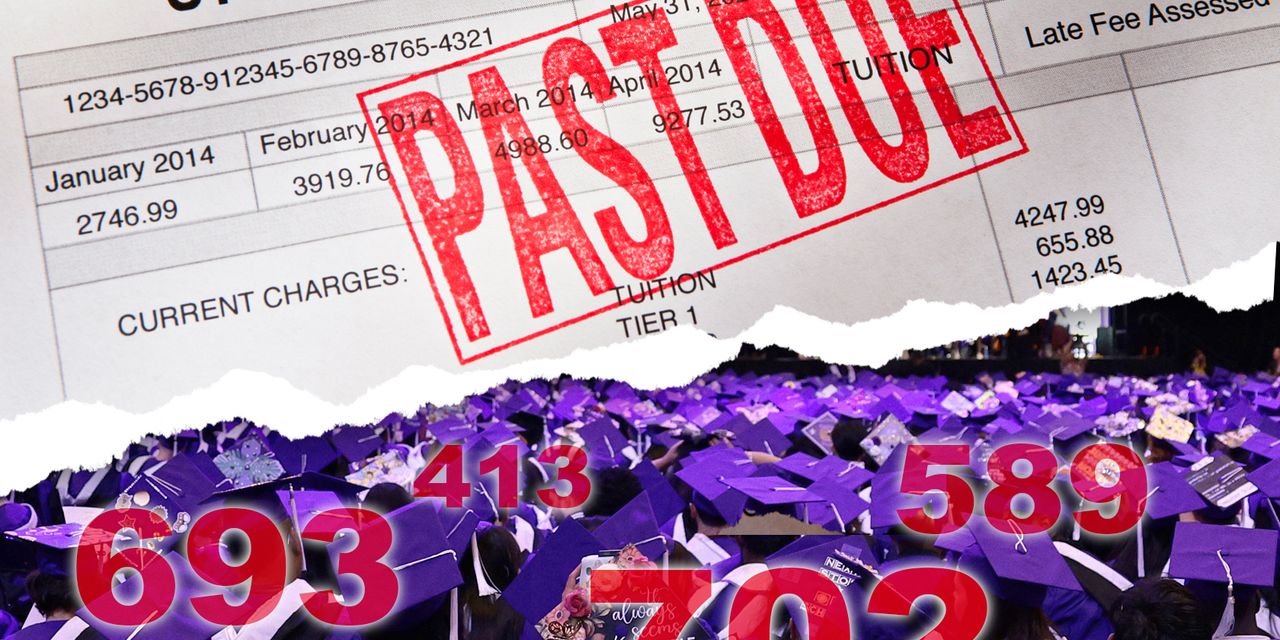More than three years after the payment freeze, the restart of student loan bills is going to be a significant event for borrowers’ budgets — and for their credit scores.
Missing the first payment could eventually result in a double-digit ding while an on-time first payment could be a single-digit bump, according to the consumer credit score company VantageScore.
In a score that ranges from 350 to 850, the credit scores of borrowers missing the first payment could eventually shrink by 49 to 82 points on average, according to VantageScore estimates.
On the other hand, people who make that first resumed payment could ultimately see anywhere from a 3- to 8-point average increase depending on variables like a person’s credit history, VantageScore researchers said.
A credit score is a critical number lenders use to decide what rates and terms they should extend to a person who needs financing for purchases like a car or a home.
Missing a student-loan payment could be the difference between favorable terms on a loan at a time when interest rates are rising — or it could be the difference between even landing a loan in the first place.
“Missing a student-loan payment could be the difference between favorable terms on a loan at a time when interest rates are rising — or it could be the difference between even landing a loan.”
So what should graduates do? “If they can figure out a way to resume their student-loan payments, this is a really good time to do it,” said Silvio Tavares, president and CEO of VantageScore, a company owned by the three major credit bureaus, Equifax
EFX,
TransUnion
TRU,
and Experian
EXPGY,
“The credit environment just got a bit choppier, and it’s going to be a somewhat higher risk for lenders,” Tavares said.
Anywhere from roughly one-third to three-quarters of borrowers might miss the first required payment, depending on VantageScore’s scenarios. That’s a wide swing of possibilities, but Tavares says it’s challenging to model for a massive payment restart on debts that have been dormant for years.
Federal student-loan payments have been on hold for more than 40 million borrowers since March 2020 when the COVID-19 pandemic began. Americans owed $1.6 trillion in student-loan debt through the first quarter of 2023, according to the Federal Reserve Bank of New York.
People were paying an average of $393 each month on their student loans, according to one Federal Reserve estimate ahead of the pause.
The eighth and final payment pause will conclude in late August, as one part of a newly-enacted deal to raise the federal government’s debt ceiling. Borrowers and servicers are still waiting for details about when payments restart, observers say.
Supreme Court will rule on loan forgiveness
Meanwhile, the Supreme Court is expected to rule this month on the Biden administration’s student-loan cancellation plan. The controversial order would cancel up to $10,000 for eligible borrowers with federal student loans and up to $20,000 for Pell grant recipients.
Without cancellation, the Biden administration has maintained that there will be a wave of student-loan defaults and delinquencies. (The VantageScore analysis looks at existing loan balances, not balances after a cancellation.)
The cracks are already showing, according to the Consumer Financial Protection Bureau. Through March, approximately 2.5 million student-loan borrowers were behind on a debt that wasn’t a student loan, researchers said. That’s roughly 200,000 more borrowers falling behind compared to September 2022.
Any impact on credit scores will take time
Any change for credit scores — up or down —is going to take time, according to Scott Buchanan, executive director of the Student Loan Servicing Alliance, a trade association.
Before the 2020 payment pause, “you’d have to miss three consecutive payments in order to get any negative credit-bureau reporting at all,” he said. During the pause, loan servicers reported borrowers as being up to date on their student-loan repayments to credit bureaus, he noted.
Servicers are still waiting to hear from the Department of Education on what happens after the pause ends. That includes the exact dates when payments actually restart, and what the credit-reporting rules will be, Buchanan said. He bets that timelines to report delinquencies will be “either the same, or more flexible.”
“Borrowers are going to have an adjustment period. We know that. The Department of Education knows that,” Buchanan said.
The Department of Education did not immediately respond to a request for comment.
Despite rising inflation, it’s actually been a good time for many credit scores. A strong job market and healthy cash balances are two reasons, Tavares said.
“Student-loan servicers are still waiting to hear from the Department of Education on what happens after the pause ends. ”
As of April, the average score in the U.S. was 702, up from 697 one year earlier, according to VantageScore data. “The average American consumer is very credit worthy,” Tavares said. A score of 661 to 780 is considered “prime,” and a score of 781 to 850 is considered “super prime.”
But some of that shine is about to come off the average score, VantageScore’s latest estimate shows. In a worst-case scenario where three-quarters of borrowers do not make that first student-loan payment, the aggregate score would fall by 9 points to 693.
In a best-case scenario — where roughly one-third of borrowers miss the first payment — the national average score falls by 1 point.
VantageScore generates approximately 19 billion scores annually, Tavares said.
But what matters to borrowers are their own scores, and how those numbers affect their financial lives, said Persis Yu, deputy executive director of the Student Borrower Protection Center.
The Biden administration’s student-loan cancellation order could be “life-changing” if it takes effect, she said. From stretched wallets to glitches resuming payments, there are all sorts of ways people could miss a first payment, Yu said.
The VantageScore analysis is “another piece of evidence to show the devastation that is going to occur if payments are resumed without cancellation,” she added.
Read the full article here













